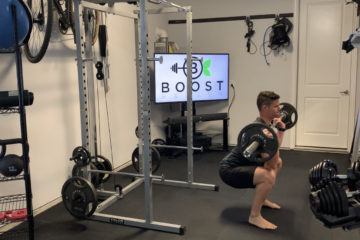
Confession
I have a confession. I panic when I am training sometimes. It is a bit taboo for athletes, even amateurs like myself, to admit to weakness in their mental toughness. For some reason it is no big deal to talk about any issue below the neck, like a muscle strain or lack of flexibility. For some reason mental health and strength, or lack thereof, seems like a touchy subject. But I want to be an open book to you all. As you know I want to try new things, research different strategies, and share ideas. So I will just go ahead and admit now that my mental game is weak. I say this because I panic in situations that I shouldn’t. It usually happens when I am doing intense endurance training. With cycling and running it happens more often in the heat, I usually do ok in cool conditions. I always keep a close eye on my heart rate when training, and in hot conditions the heart is working overtime in an effort to cool the body and keep up with the exercise demands. Sometimes in extreme heat I will look down at my watch or computer and see that my heart rate is higher than normal and notice it is not coming down. I start to get nervous and a bit panicky. Sometimes the nervousness and panicky feeling go away after a few seconds and sometimes it gets so bad I have to stop the activity for a bit. It’s easy enough with cycling and running to just pull off to the side of the road. I wait for the heart rate to come back down and then usually head home carefully and try to stay calm. With swimming I get the panic feelings pretty much each time I get in the water, regardless if it is in the pool or open water. It certainly is intensified in the open water though. I have only been swimming since I entered my first triathlon in 2013 when I was 35 years old. Prior to that I couldn’t properly swim 1 lap in the pool! With temperatures beginning to rise lately it will mean getting more swims in as well as more heat training on rides and runs. This translates to a lot of opportunity to work on my mental game! This got me thinking about how important the role of the mind is with training and race performance. It seems no matter where you sit on the performance anxiety spectrum, mental strength tactics should be in your toolbox to help perform your best in all situations, even those beyond sport and training.
The mental component of fitness training and sport performance has been studied for many years in the field of sport psychology. According to a 2016 article in the Journal of Change Management by Jamie Barker, sport psychology looks at the relationship between the brain and sport performance, inclusive of optimizing performance, and mental health of athletes, teams, coaches, and organizations.
40 years of research in the industry has shown that there are many effective psychological strategies that can be used to improve individual or team performance. Interestingly, research also suggests that there are similarities between professional athletes and business employees working in an ever changing and high demand environment. This makes sense to me as I think about a few stressful work situations I have been in. Having strategies to help with calming and mental strength would have been helpful. As such, think of working on your mental game as a smart time investment, since it can help you be stronger in sport, training, work, and life situations.
After doing a bit of research I have identified 3 tactics that studies have shown to help flex your mental muscles to break down barriers and prevent or recover from anxiety. Since this is something I am currently struggling with, I also share some examples of how I intend to apply them.
1. Positive Self-Talk
According to a 2010 article by Chris Gee in Behavior Modification, competitive anxiety is the most common psychological issue that athletes deal with but tactics such as Rational Emotive Therapy (RET), self-talk, and reframing can greatly assist in dealing with it. RET helps the athlete by rationalizing the situation by separating their self-worth and identity from performance. According to calmclinic.com, self-talk has to do with distracting your brain with positive reinforcement messages, happy memories, or problem solving.
This sounds like a fairly simple strategy but I am excited to try it. My normal self-talk when I get hot and my heart rate spikes is “Uh Oh, that is high, it isn’t coming down, this isn’t good, I am hot, I am dizzy, and I am scared”. I am guessing that isn’t real great for performance based on this research! So I have given it some thought and my self-talk message will be something like: “That is interesting that my heart rate is high, but I am in good shape and it will recover as I slow down, I am feeling good, and this is making me stronger”. It is such a long affirmation message that maybe my heart rate will have recovered by the time I finish saying it! You may have noticed that I squeezed in some reframing into my self-talk message too. I went from saying “Uh Oh” to “That is interesting.” I am excited to try this technique out. I think the new mindset alone will be helpful. It is almost like I am welcoming a challenging mental situation instead of trying to avoid it which would only make the panic feelings worse.
2. Exposure Therapy
Dr. Chantal Marie Gagnon talks about ways to break free of mental barriers in an article on psychcentral.com and her tips include a method of doing the thing you are afraid of over and over again until you don’t fear it anymore, a.k.a. exposure therapy. The concept of exposure therapy isn’t new and it intuitively makes sense that if you do something enough times with success you won’t be scared of it anymore. I agree with this to a certain extent, but it isn’t that simple for everyone and may need to be applied to other tactics to be successful long term.
Let’s use my swim panicking as an N=1 case study of exposure therapy. As mentioned previously, I have only been swimming for the last few years. I played in pools, oceans, and lakes growing up and would swim around leisurely but not with proper technique. Then, since I started doing triathlons a few years ago, I have spent many hours in the pool doing laps and working on swimming stroke technique and breathing. I have swam many times in the ocean practicing open water technique and sighting. I have swam in lakes and oceans in triathlon races. More specifically, I did ocean swimming here in Hong Kong in the Dragons’ Summer Series Triathlon two times last year which included open water swims. These races are actually 3 sprint triathlons in a row in the same morning, so technically I did 6 open water swims in race situations last year. This all adds up to pretty good exposure therapy right? I will say that I felt absolutely amazing about myself after completing those triathlon race swims. I thought I had conquered the fear, but sadly this is not the case. The first Dragons Summer Series triathlon is next month and just thinking about swimming in open water sounds scary. Oh and did I mention that these are training races so I am allowed to use my pull buoy? I am still scared! Why?! Why didn’t the exposure therapy stick? I know I can swim that far. I know I can make it safely. I have done this exact swim course 6 times and was totally fine.
Some interesting research on exposure therapy and fear may explain why. A 2012 study in Behavior Research and Therapy by Vasey et. al, shows that you can get good results with exposure therapy for anxiety disorder, but a phenomenon called “return of fear” can happen. This occurs for some individuals where the progress they made in overcoming the anxiety stimulus is lost and the fear returns. The researchers hypothesized that the return of fear was more likely to occur when an individual’s automatic attitude response to the stimulus of fear was still negative 1 month after the exposure therapy. This sounds an awful lot like my swimming anxiety. Even though I had successful exposure therapy results after the ocean triathlons I still have a negative automatic response to swimming several months later. There still needs to be a lot of research done on exposure therapy and the return of fear phenomenon as it is still not well understood.
So I will continue to expose myself to swimming, but to ensure success I am also going to go ahead experiment with the aforementioned tactics that I will be using with heat and heart rate panicking as well. We will see the combination of exposure therapy with some positive self-talk and reframing helps with the swim panicking. My current thoughts when I go into swim panic mode are something like: “I can’t get enough air, I am sinking, I am tired, I am not a good swimmer, and I am scared”. This is most likely not what the high performing swimmers think about during their stroke! I think my swimming positive self-talk and reframing will be something like: “It is interesting that I lost my rhythm but I have swam further than this before in tougher conditions and was fine, I am feeling good, and I am strong”.
3. Anchoring
I wondered how prevalent panic and anxiety were in sport and training. I did a quick and informal survey of some of my workout buddies and they admitted to having some performance anxiety, especially before big races, but it didn’t sound like anyone had full on panic attacks like I do. But there are other athletes like me who do have issues with panic attacks and are still able to perform. According to an article on the dailymail website, Chris Hoy, an Olympic gold medal cyclist from Great Britain, also had his battles with mental strength and panic attacks.
Interestingly, Chris used some of the tactics previously discussed to get through his Olympic competitions including positive self-talk and reframing but also did a very interesting one that I may try called anchoring. According to the same article, the anchoring technique that he used involved attaching a positive image from previous success to a gesture, like grabbing your earlobe.
I may add this to my self-talk and reframe phrasing for cycling and running where I could envision how good I feel after completing a big climb and grab my left earlobe. For swimming, I could anchor by doing a few recovery breast strokes and envision the feeling of accomplishment I have when I run out of the water after finishing the swim.
Triggers
There are other examples of elite athletes who struggle with the mental game. In fact just last month Kevin Love, the NBA All-Star forward for the Cleveland Cavaliers, discussed a recent panic attack he had during a game this season. He wrote an excellent article about this in the Players’ Tribune. It was a very honest assessment of the occurrence that really hit home with me. He describes how talking about it was tough, but also very helpful, as suppressing feelings and hiding from the issue can make it worse.
Suppressed feelings as an anxiety trigger were also noted in the dailymail article about Chris Hoy. It also mentioned that the panic attacks are more common if you are a stressed out perfectionist. Apparently the panic attacks are a way of releasing your feelings.
Let’s Try This
I have known for a long time that I hold emotions in and use exercise as a way of releasing feelings. In fact I mentioned in my blog and podcast on the topic of wellness balance that I realize I have work to do in the emotional wellness dimension because of this type of suppression. When I learned that the panic attacks could be brought on by perfectionism and stuffing down emotions, it was like a light went on! I have always worn my perfectionism as a badge of over-achievement and the emotional thing I just assumed was genetic and not easily treatable. But I am excited to try these new tactics of positive self-talk, exposure therapy, and anchoring when I start to feel a little panicky! If you see me out on the road talking to myself and grabbing my earlobe, you can rest assured I am just doing some mental strength work. Perhaps you will join me?
If you have had success with any of these mental strengthening strategies I would love to hear about it! Please share in the comments below.
Podcast: Play in new window | Download
Subscribe Apple Podcasts | Google Podcasts | RSS



